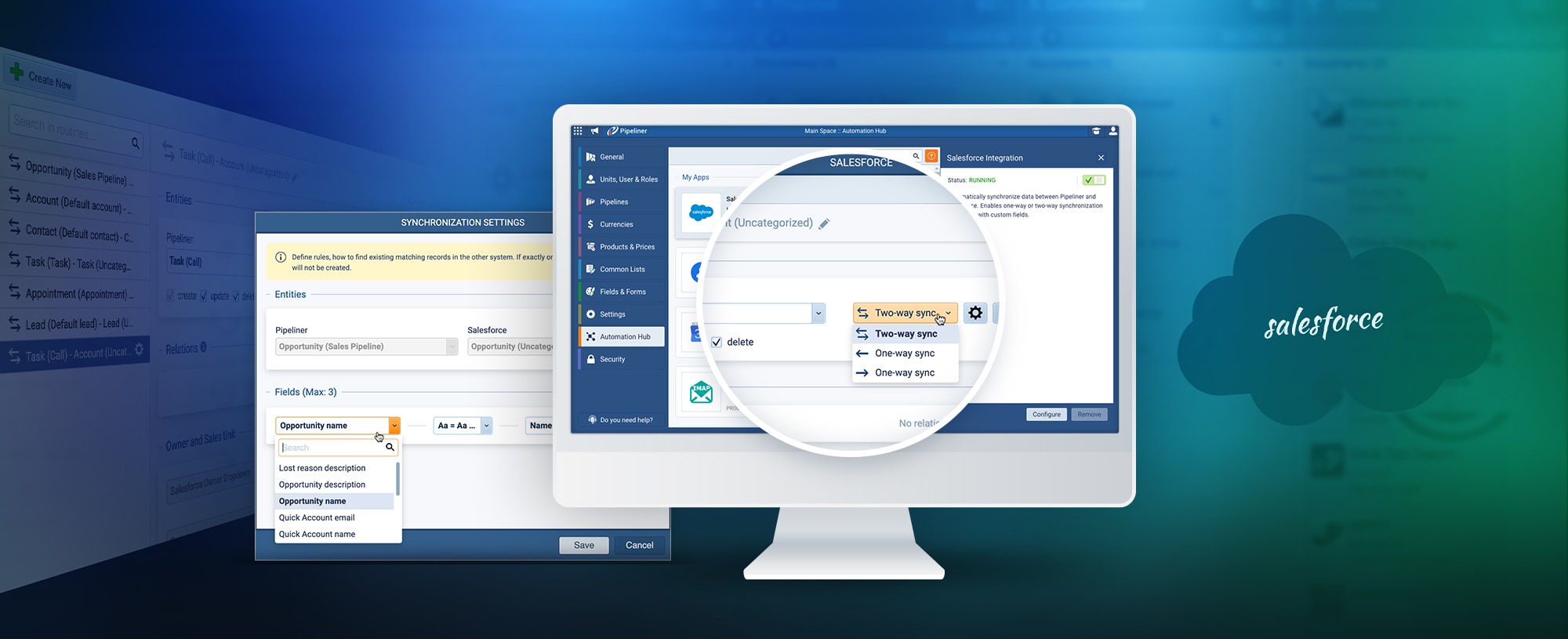A great sales team is a necessity for any company that wants to stay ahead of the competition. If you don’t have a sales trainingSales Training Sales Training is the process of improving the skills, behavior and mindset of sales professionals to upgrade their selling performance. program, there’s a chance you’re not getting the best from your employees.

Because of shifts in attitudes, beliefs, and culture (amongst other things), sales techniques and strategies that worked in the past won’t always be guaranteed to work in the future. For this reason, managers should always look to review and improve any sales training they offer to employees.
What is Sales Training?
Salespeople can be naturally gifted, but even with an in-built flair for sales, there’s always room for improvement. Sales training looks at ways to hone and develop employees’ current skills and knowledge to better place them in a competitive market. In addition, it can be used to train staff on how best to manage time, understand the productProduct Product refers to anything (an idea, item, service, process or information) that meets a need or a desire and is offered to a market, usually but not always at a price. better, and utilize new CRM systems.
It’s more than just strategy, it’s helping the team understand the customerCustomer Customer is an individual or an organization that purchases a product or signs up for a service offered by a business., their needs, and behaviors to have better sales communication which helps them meet the customer’s needs. By grasping the nuances of sales funnels, from lead generationLead Generation Lead Generation is a set of activities aimed at generating interest around a product or service through methods such as 1. content marketing (blogging, podcasts, free downloads); 2. advertising (PPC, banner ads, Yellow Pages, sponsoring an event); 3. referrals (recommendations from existing customers and other people); 4. outbound marketing (cold email, cold calling), and 5. partnerships (joint ventures, affiliate marketing). to conversionConversion Conversion is the process of turning a target consumer into a paying customer; or more generally, the point at which a user performs a specific action favorable to a marketer or a seller., sales professionals can tailor their approach to match each stage of the customer journey.
This includes leveraging modern tools and techniques such as email marketing strategies to engage with customers effectively at every touchpoint. But while sales training is necessary, it’s not always easy to get right. Here, we’ll look at how to create an effective sales training program.
The Key Benefits of Delivering Successful Sales Training
Perhaps you have a great recruitment management system. You use it to find the best people for your vacancy smoothly and seamlessly. But how can you make sure they are confident and well-equipped in the role?
Having effective sales training in place is a huge must, and there are several key benefits you can’t ignore.
1. Increase RevenueRevenue Revenue is the amount of money a business generates during a specific period such as a year or a quarter; also called sales.
Because sales is an ever-changing field, it’s easy for sales skills to become outdated. Training keeps staff up-to-date with customer preferences, product knowledge, and market trends, leading to a more successful sales team.
Training staff well on an ongoing basis also produces more sales and more revenue. In addition, trained staff who feel like they’re doing a good job will feel more empowered and motivated, which means they’ll be less likely to leave, saving the business money on recruitment.
Expert Tip from Maria Harutyunyan, Founder of Loopex Digital: “Implementing microlearning sessions—short, focused training modules—can help sales teams quickly adapt to new trends without disrupting their workflow. Additionally, using real-world sales scenarios in training programs enhances retention and application, leading to more confident and effective sales interactions.”
2. Enhance Staff Morale
Employee training goes beyond sales. It can have a positive effect on the bottom line because it also improves employee satisfaction, motivation, and retention. This reduces costs associated with staff absence and recruitment and can have a positive impact on productivity.
It also boosts company culture and enterpriseEnterprise Enterprise (in the context of sales) is a relatively large organization typically composed of multiple levels, locations, and departments which need multi-layer software systems that support collaboration across a large corporate environment. agility. If you’ve used diversity and inclusion software, there’s a high chance you believe in empowering and supporting your staff, and staff morale is a huge part of this.

3. Support a Customer-Centric Approach
With buyerBuyer A buyer is an individual or organizational entity that purchases a product or subscribes to a service. habits changing, putting the customer first has never been more important. Understanding the customer, their goals, their behavior, and their buying habits are crucial elements of selling. Training around this will stem from dataData Data is a set of quantitative and qualitative facts that can be used as reference or inputs for computations, analyses, descriptions, predictions, reasoning and planning. that have been interpreted and will help improve selling systems.
Sales teams that understand the customer well can build trust and gain loyalty. In the case of local marketingMarketing Marketing is the field, set of actions, or practice of making a product or service desirable to a target consumer segment, with the ultimate aim of effecting a purchase., where a company has purchased, say an .io domain to appeal to a local market, staff may even need culturally relevant training to better communicate with local people.
Additionally, incorporating training on specialized marketing strategies such as private practice marketing can further enhance the team’s ability to connect with specific customer segments.
4. Keep Up With Challenges in Sales
As the nature of sales changes, it’s important to keep up with new methodologies. We’re seeing the death of the ‘cold hard sell’ and a movement towards nurturing relationships. Since this shift requires a different skill set, training is an essential part of company success.
How to Create an Effective Sales Training Program
Here we’ll look at how to elevate your sales training to get more from your sales team.
1. Drop the Old Curriculum
Having a traditional course or curriculum may have worked in times gone by but won’t necessarily serve you moving forward. The problem with delivering a curriculum is its rigidity and potential to become obsolete quite quickly. Due to its prescriptive nature too, it doesn’t cater to the individual needs of your sales team or your market.
2. Define or Redefine Your Sales Training Objectives
An effective training program must deliver what your sales team needs to develop in terms of skills and knowledge. In turn, these should align with your business goals for the best outcome. A skill gap analysis can provide much-needed information on gaps that need to be addressed. After that, you can build a curriculum to target specific areas.

3. Have Clearly Defined Learning Objectives
What do you want your salespeople to know after the training? It’s important to know these so you can assess the effectiveness of your training program afterward. Having clear learning objectives from the outset will help you plan the training. Some examples of learning objectives could be:
- How to build customer trust
- Turning complaints into sales
- Identifying genuine objections and how to deal with them
- Building rapport
- Using sales tools effectively.
4. Provide Continuous Support
Delivering good sales training is just the start of the program. First of all, retention and absorption can be a problem. Receiving training can be quite overwhelming, and it’s unlikely everyone will remember it all. Secondly, the market and how we communicate with customers change all the time, and training will be needed to help your team stay ahead of the game.
69% of sales professionals say their job is harder now, which highlights a need for ongoing training and continuous support. Identifying why and how to support your team is a crucial part of creating a sales training program.
Having the right sales mindset is, therefore, vital. Continuous training support can help nurture and develop this amongst your team.
5. Determine the Best Training Method for Your Team
If you’ve used a blind application process, chances are you wanted the best people for the job as you used an unbiased way of recruitment to find them. Therefore, ensuring these people continue to be the best at what they do, means ongoing training should be a part of your culture.
Determining the best way to deliver the training can have a big impact on its effectiveness. Deciding which method to use will depend on the nature of the training, the available resources, and the needs of the trainees.
For instance, if your company utilizes startup sales outsourcing as part of its sales strategy, you might consider incorporating specialized training sessions or workshops tailored to this approach. Exploring how different methodologies align with your outsourcing strategy can ensure that your training program effectively supports your sales objectives.

Some of the most common methodologies are:
- Instructor-led teaching
- On-the-job training
- Conferences
- Work shadowing
- Self-directed learning
- Lectures (online or face-to-face)
- Workshops
- Case studies
- Discussions
- Role-playing
- Simulations
Often, a combination of methodologies works best.
6. Utilize Sales Training Technology
There are a range of software products available to help support training, including the incorporation of a business management app. Such apps offer comprehensive solutions for organizing sales data, tracking performance metricsMetrics Metrics are quantities that are measured and used to:, and streamlining workflow processes.
You may use video conferencingVideo Conferencing Video Conferencing refers to the technology behind or the act of establishing a visual connection between two or more people positioned in different locations to facilitate remote communication. platforms like Zoom, which can be useful to train groups of people in different locations all at the same time, or even full packages of pre-written online courses and certification courses. Additionally, integrating tools that automate workflows can streamline processes and enhance efficiency across sales training initiatives.
For instance, your sales team might need the best backlink-building software to optimize their lead generation, or you could implement automated email outreach tools to increase engagementEngagement Engagement is the state or process of keeping a specific class of audience (employees, management, customers, etc.) interested about a company or brand and invested in its success because of its perceived relevance and benefits to the audience. and follow-up efficiency. This use of technology ensures that sales teams can focus on high-value tasks while improving overall performance.
A real time coach is another option. It uses AI to offer guidance, support, and training across all areas of sales and can be accessed in an instant.
7. Develop an Assessment to Monitor Success
When you deliver a training program, it’s important to know whether or not it’s been a success. Assessments are one way of determining this. You can conduct assessments at various points during the training (such as the end of a module or topic). The aim of this is to look at whether:
- Trainees have understood the material that’s been delivered.
- Trainees have obtained mastery after the training.
- Trainees have retained knowledge and are able to use it to put it into practice.
It’s important to have a plan of action if any training areas are not delivering the best results. Continuous improvement is an essential part of having an effective sales training program.
8. Gather Course Feedback
As well as assessing staff, gathering their feedback is also a great way to determine whether the training has been a success or not. How did employees feel about the training? Are they now able to hit their goals? Was the sales purpose of the training met? The answers to these questions can help you determine whether further refinement is needed.
Some key areas to gain feedback on include:
- The reaction to training. Was it informative? Do employees feel like they gained something?
- The quantity and quality of the training. Was it in-depth enough? Did it lack something? Was it too long or too short?
- The results. Were employees able to improve their performance? Did the organizationOrganization Organization is a cohesive group of people working together and formally bound by a shared identity (e.g., one team, company, club, etc.) and a common purpose (e.g., business growth, athletic victory, etc.). benefit?
- Has the manager noticed an improvement? Have customers?
9. Improve the Training Regularly
As mentioned earlier. Training is not a one-off. It should be a part of your company culture. Monitoring the effectiveness of training, how well it meets the needs of the organization, and whether it keeps up with trends is an important part of staying ahead of the competition.
It’s also important to ensure that training aligns with your corporate goals, as these too will change over time.
Even effective training may need tweaks. Maybe the contentContent Content refers to a material or document released in various forms (such as text, image, audio, and video) and created to inform, engage or influence specific audiences. is good, but the delivery isn’t. Could gamification help improve engagement, for instance? The key thing is to stay ahead of what’s available and ensure it meets the needs of your team and your company objectives.
Final Thoughts
Effective sales training is not a one-size-fits-all approach. While there are off-the-shelf training programs and software packages available, it’s important to know the overall needs of your organization and clearly define objectives.
You must know what you want from the training to be able to plan an effective program. This means identifying training needs (by conducting a gap analysis) and ensuring you’ve met them (through assessment).
If you update, modify, and refine training regularly, there’s no reason why your sales training won’t be a huge success.





